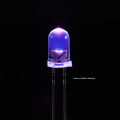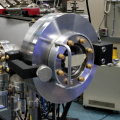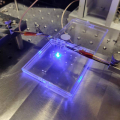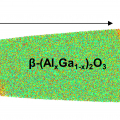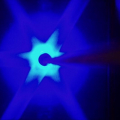Ultraviolet LEDs, particularly at a wavelength of ~280 nm, offer tremendous potential for efficient disinfection for water and air. Our approach for UV LEDs is based on MOCVD growth on SiC substrates. We have developed an advanced flip chip process that includes ion etch removal of the SiC growth substrate and subsequent roughening of the AlN [link]. Ongoing work is focused on improving the quality of the AlN buffer layers, active region and developing AlGaN tunnel junctions.


